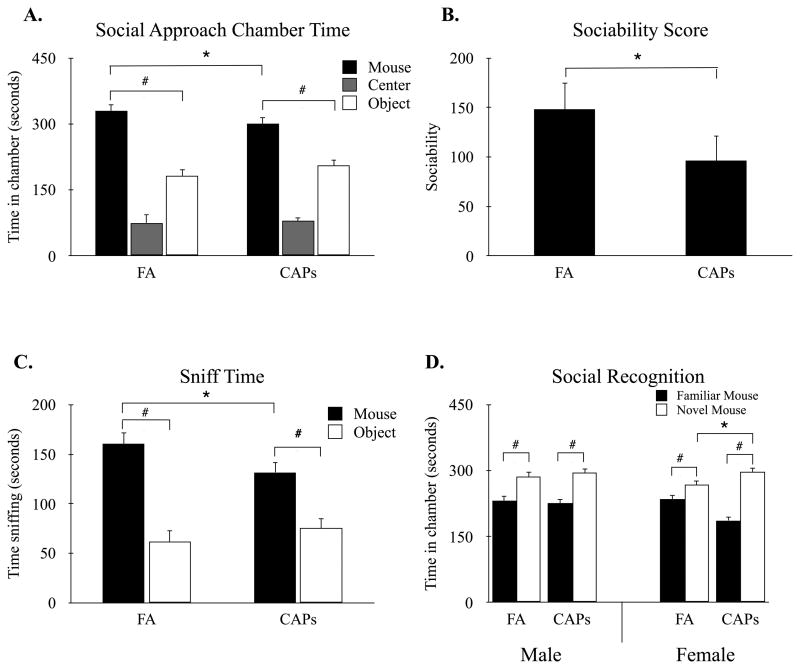Figure 2.
Offspring born to CAPs-exposed dams show reductions in social approach, but not in social recognition. (A) While both FA- and CAPs-exposed mice spent significantly more time in the novel mouse chamber compared to the novel object chamber, CAPs mice showed significantly reduced preference for the novel mouse compared to FA-treated controls. (B) Calculation of sociability score (time with mouse – time with object) further revealed CAPs mice had significantly decreased social motivation compared to sex- and age-matched FA controls. (C) FA- and CAPs exposed mice spent significantly more time sniffing the novel mouse compared to novel object, however CAPs mice displayed significantly decreased time sniffing the novel mouse compared to FA controls. (D) In the social recognition phase, mice in both exposure groups spent significantly more time in the chamber with the novel mouse compared to the chamber with the familiar mouse. Data were compared using a linear mixed-effects model with chamber, maternal treatment, and offspring sex as fixed effects and dam as the random effect (* p < 0.05 treatment; # p < 0.05 chamber). Data shown are means ± SEM. Sample size: FA n = 26 (13M/13F; 13 litters), CAPs n = 31 (15M/16F; 12 litters).

